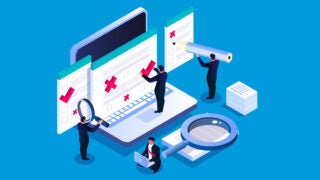World Alzheimer’s Day
World Alzheimer’s Day is Friday, Sept. 21, and USC researchers report advances in detection, treatment and care — giving hope to millions of people. The disease afflicts 5.7 million Americans, and the number of patients is expected to nearly triple in 30 years because we live longer. One in three seniors dies with Alzheimer’s or another dementia. Alzheimer’s is the sixth leading cause of death in the United States. At USC, some 70 scientists are committed to finding solutions, and they will join with other organizations worldwide on Friday to raise awareness of, and help people cope with, the brain disorder. Here’s what some USC experts are doing to advance solutions:
Contact: Leigh Hopper, (213) 740-5277 or lhopper@usc.edu
Novel ways to identify people for clinical trials
“We’re now conducting therapeutic trials in people who are ‘normal’ in the sense they have absolutely no symptoms, and yet we know they are headed toward symptomatic Alzheimer’s disease,” said Paul Aisen, director of the Alzheimer’s Therapeutic Research Institute (ATRI) in San Diego and professor of neurology at the Keck School of Medicine of USC. Aisen has been a leading figure in Alzheimer’s disease research for more than two decades. He has developed novel methodologies and designed and directed many large therapeutic trials.
“In the past, we’ve recruited people because they go see their doctors about memory concerns, or a family member brings them to the doctor because of those concerns. Well, that doesn’t work for early intervention trials. We’re trying to connect with people as they get older, without waiting for symptoms. A program we started about a year ago is the Alzheimer’s Prevention Trial (APT) webstudy. We are hoping this will be an important new tool for connecting with people and providing a pool of candidates for our early stage intervention trials. We’ve enrolled 7,600 people, want to make it bigger still and encourage people 50 and older to visit the website,” Aisen said.
Contact: (858) 964-1411 or paisen@usc.edu
Better visualization of the disease than ever
“We’ve made enormous strides in understanding Alzheimer’s disease,” said Arthur Toga, director of the Laboratory of Neuro Imaging (LONI) and the USC Mark and Mary Stevens Neuroimaging and Informatics Institute at the Keck School of Medicine of USC. He is also the Ghada Irani Chair in Neuroscience and provost professor of ophthalmology, neurology, psychiatry radiology and biomedical engineering.
“We are testing which drugs hold the most promise. We’ve been able to chart the course of the disease using brain imaging techniques. We can use a molecular tracer that attaches to amyloid or tau, the abnormal proteins found in the brains of people with Alzheimer’s, and measure how much and where this substance is in the brain of individuals, and relate that to other observations such as cognitive decline. These are great weapons to be able to examine the brains of people as the disease progresses. Even if you don’t cure it, if you can slow down its progression, and that’s a significant win,” Toga said.
Contact: (323) 442-7246 or toga@loni.usc.edu
Early diagnosis can stave off disaster
“In underserved communities where there is not much education about what dementia is, it’s seen as a part of normal aging. ‘Grandma’s getting old, what do you expect?’ Even medical providers don’t always recognize early signs and symptoms,” said Freddi Segal-Gidan, associate professor of clinical neurology and family medicine at the Keck School of Medicine at USC and director of the state-funded Rancho/USC California Alzheimer’s Disease Center at Rancho Los Amigos in Downey.
“When someone is in the early stages of dementia, and their judgment and reasoning are off, they start making errors that put themselves and others at risk. They may cause a car accident. They might forget to take their diabetes medicine. Even in the absence of medications that cure Alzheimer’s, there are non-pharmacological treatments that are important in slowing decline and preventing something bad from happening,” she said.
Contact: (562) 385-8130 or segalgi@usc.edu



